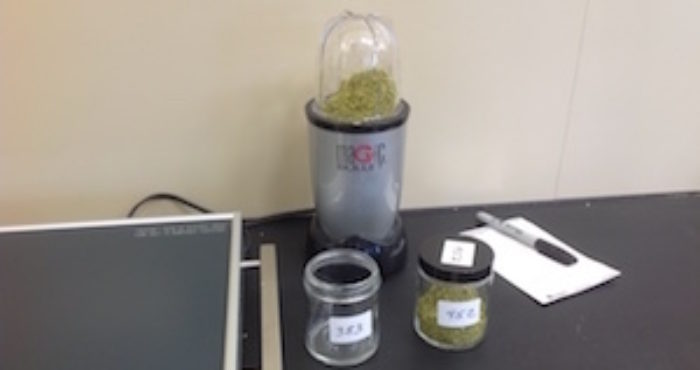Alternative Method for Hop Aroma Evaluation – The Kostelecky Method
The following is an alternative method to the popular hand-rub for the sensory analysis of hop samples.

This provides a neater and more standardized procedure as well as eliminating the carryover effect from residual hop resins on the hands. The method also has the advantage that it is applicable for hop pellets as well as whole hops.
Materials:
- Small grinding apparatus, e.g. coffee grinder or Magic Bullet®
- Electric kitchen warming tray capable of controlling a temperature near 100 – 110 degrees F.
- Round glass scintillation jars, approximately 5 oz. size with chemical resistant lid.
- 1” wide simple paintbrush
Method:
- Sample approximately 5 to 10 grams of whole hops or hop pellets
- Place into grinding apparatus and grind sample for 10 seconds or time sufficient to provide a fairly uniform fragment size. The fragments need not be small and care should be taken not to heat the sample from the friction.
- Fill the scintillation jar approximately one-third full with the ground hop sample and either set up immediately for sensory analysis or keep refrigerated for no more than a few hours in preparation for a later analysis.
- Use a 1-inch wide paintbrush to sweep out residual hop material and dust from the grinder. This is usually sufficient between samples.
- For the panel, set the jars on the warming tray, adjusted* to about 105 degrees F. and let the samples at temperate for 20 minutes prior to the panel if the samples have not been refrigerated. Cooled samples should be left for 30 minutes. This should be sufficient to bring the hops to temperature.
- Panelists should shake the closed jar gently, then remove the lid and sniff the jar headspace to evaluate the aroma. The lids should then be immediately replaced on the jar.
- The panel should be completed within one hour of its start.
- Use whatever method for sensory analysis and data collection that is appropriate.
*To calibrate the warming tray, I used a scintillation jar filled with one-third water and thermometer, then gradually increased the temperature adjustment upward until the water stabilized at approximately 105 F. (temperature at which I measured hops using a hand rub).
Cleanup:
- Hops should be discarded from the jars quickly following the sensory panel, then rinsed and washed with a high quality laboratory detergent containing no fragrances and rinsed with water – preferably distilled but not necessary. The same should be done with the grinding apparatus. I’ve had great success with the ease of disassembly and cleaning of the Magic Bullet®. Coffee grinders can be problematic.
- Occasionally, to remove an inevitable buildup of hop resins, a rinse with a 50:50 methanol (or ethanol): water solution will keep the materials in great shape.



